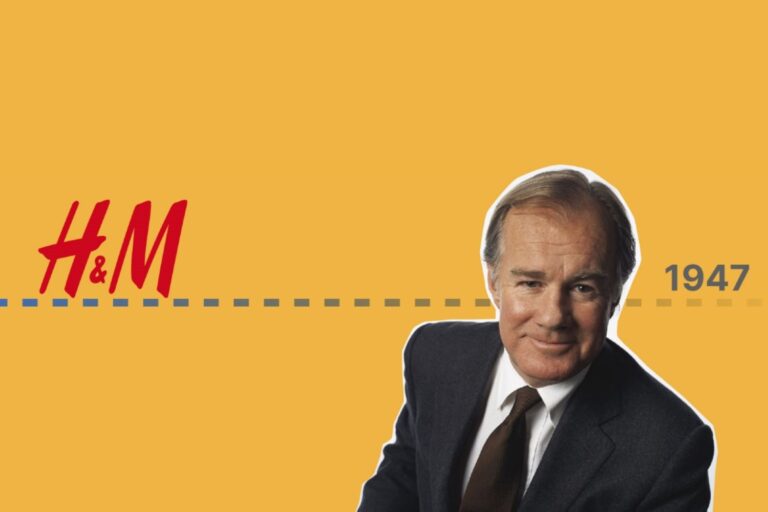Saks Fifth Avenue & Its Ground-breaking Efforts to Reconstruct Customer Experience
Long gone are the days when luxury retailers maintained a long-held narrative supposing that their shoppers were not going to be lured online. The modern fashion sphere has boasted an entirely different story, in which both high-end luxury and discount chains have found themselves in an evolving landscape that is no longer reliant on brick-and-mortar. Given that, one who does embrace digitalization as well as handsomely leverages it to deliver the best customer experience at the very beginning will be the biggest winners – and the New York-based Saks Fifth Avenue undoubtedly presents a stunning example of this.
As stated by Tracy Margolies, Chief Merchant, Saks Fifth Avenue, in the release, “Saks Fifth Avenue is known for delivering an effortless and individualized customer experience. As part of this, we strive to offer an assortment that is new, unexpected, and exclusive.” In bold efforts to digitize its customer experience, the retail behemoth has adopted wise moves to meet the rapidly changing preferences and expectations of today’s customers while also outperforming its competitors and renewing its leading position within such a competitive luxury retail scene. Yet, how does the Hudson’s Bay Company-owned Saks Fifth Avenue reinvent itself to harness digital convenience? Which specific course of action does the luxury chain employ to revolutionize the shopping experience so as to fuel up its success? Let’s read to explore!
The Rise of Saks Fifth Avenue: How the High-End Retail Behemoth Tops in Customer Experience

The Changes That Count
During the previous decade, several luxury retailers inclined to rest on their laurels, traditionally relying on the in-store experience to convey the sense of specialness up to the expectations of their customers. Whilst more and more digital shopping options emerged during the 1990s, a large number of iconic high-end retailers – including Saks Fifth Avenue – did hold their ground.
Since its inception in 1867, Saks has defined its brand of personal luxury through its unique physical shopping experience – and it’s understandable that the company did not expect that fact to change. Furthermore, since Internet-based marketing began to spread through lower-priced stores, Saks hesitated to offer its products online. Specifically, its marketers doubted whether shoppers sitting at their home computers would order $10,000 designer dresses or $900 dress shoes with just a few clicks. To some extent, such a philosophy did make sense, which was, indeed, what other legacy high-end brands such as Barneys and Tiffany had in mind.
Everything remains unchanged until 2000 when Saks Fifth Avenue finally responded to the digital zeitgeist and launched Saks(dot)com (today is known as Saksfifthavenue(dot)com), which turned out to be an instant and flying success. Before long, the website became essentially a parallel store, with its own pricing, supply chain, and messaging. Even, during the first decade of this century, the two Saks divisions largely operated separately from each other.
Nevertheless, after the first century’s decade, in around early 2011, customers’ shopping habits and patterns witnessed a new shift: It became obvious that a plethora of high-income customers did not fall into one category or the other. For instance, whereas some individuals entering into a store for fashion advice would then go home to make their purchasing online, several others would scout out products such as shoes online, yet come into a physical store to decide whether they actually fit. Given that, Saks’ Former CEO Steve Sadove launched an omnichannel initiative, which envisioned offering iPads in stores and in-store delivery of items ordered online. Such a ground-breaking plan was a big factor in capturing the interest of the Hudson’s Bay Company, which bought out Saks in 2013 for a staggering $2.4 billion.
Personalization as a Key Success “Ingredient”
Later on, as Saks Fifth Avenue reviewed the fashion landscape as well as its competitors, the luxury chain realized that 21st-century shoppers are looking for personalization. The online disruptors were taking profitable advantage of this customer expectation, from which they tailored products specifically to customers’ preferences. The transformations being delivered at Saks are emblematic of the realization across all retail sectors that marketing success depends on presenting the customer a truly individual experience.
Let’s take a close look! At Saks Fifth Avenue’s Brookfield location in Lower Manhattan, the unique in-store experience walks the customer through a shopping journey fully equipped with various digital touchpoints. With Saks as a Service, call inquiries route the customer service center d to an in-store sales associate.

Marc Metrick, President and CEO of Saks Fifth Avenue, calls this an all-channel approach, firmly believing that “everyone deserves personal attention at all levels. We can shepherd you through your shopping journey.”
Anyway, Rich In-Store Experience Still Being a Hallmark of Luxury
Whilst there exist some luxury retailers maintaining the narrative that shoppers were not likely to be lured online, the sales figures have painted an entirely different story: in particular, luxury e-commerce sales are anticipated to reach $21 billion by 2021, revealing faster growth than many other e-commerce sectors. Recognizing Saks’ success in the burgeoning digital marketplace, and seeing the writing on the wall, other icons within the luxury shopping ecosystem have rushed to catch up.
- In 2016, Barneys developed and integrated its iBeacon Technology at its Chelsea, New York, flagship store, which allowed for personalized messages to be triggered by the app while customers walk around inside the store. Furthermore, the app is designed with push notifications and localization, encouraging spontaneous shopping by greeting customers when they come within the range of Barneys’ stores.
- Bergdorf Goodman in Lower Manhattan has installed digital mirrors that allow customers to take pictures with garments in the store. Utilizing those digital mirrors, clients can compare looks, save them as well as share with friends via email or SMS.
- Tiffany, another legend in luxury, also offers an augmented reality experience via its app, folding social media and “try on” experiences into its remote shopping channel. The outcome of these innovations has resulted in a 20 percent increase in sales for the iconic jewelry retailer.
In light of the fact that various luxury brands buy into the value of digitalization for their customers, Saks Fifth Avenue has shown the way by maintaining an equally serious focus on its in-store experience. In April 2016, Saks opened the second largest of its stores, in Houston’s Galleria – which replaces the previous Houston branch and integrates with some new thinking.
In Manhattan, a brand-new Saks branch opens in Brookfield Place, a glittering high-end mall connected by underground walkways to the One World Trade Center. Like the Houston store, this New York location will spare no expense in its decor. Architect Richard Found commented that he was “essentially given carte blanche” in its design, and he built the store around an eye-catching tower and a dramatic Barry Reigate mural.

Saks’s Recent Efforts to Elevated Its Website and Reconstructs Its E-Commerce Experience
With a view to setting the standard for luxury e-commerce and furthering its industry-leading personalization efforts, Saks Fifth Avenue has recently unveiled a revamped e-commerce experience at Saksfifthavenue(dot)com, marking the company’s first comprehensive website re-platforming and redesign within the last five years.
Re-platformed leveraging the Salesforce Commerce Cloud, the revamped site empowers Saks to propel its personalization initiatives while also fostering flexibility to enable future enhancements to its digital strategy.
To more specific, men’s wear, which executives have been touting for some time as the best-selling category, is propped up with its own homepage for the first time, which leads to a designated men’s section. In other words, should Saks have you identified in its database as a men’s wear shopper at the moment you log onto Saksfifthavenue(dot)com, the men’s homepage will pop up. Otherwise, if you’re a women’s shopper, the women’s home page will be shown. So, what if Saks Fifth Avenue has no information on you? In this case, the women’s homepage pops up since most who venture onto Saksfifthavenue(dot)com are shopping for women’s wear.
“We really redesigned the site for fashion, personalization, and ease,” stated Emily Essner, Saks Fifth Avenue’s Chief Marketing Officer, who is responsible for marketing and the digital business.
It’s more than critical that Saks enhances its web site to offset, as much as it can, declines in brick-and-mortar stores owning to the economic lockdown related to the “black swan” pandemic – especially when such tony flagships as the ones it has in Manhattan, Beverly Hills and Bal Harbour, Fla., among other units in its fleet, have been hurt by temporary closures, tourism declines, and the fact that people have been reluctant to shop indoors, fearful of contracting the coronavirus.
When it comes to its business performance this year, some lost store sales have been captured online, although Saks executives decline to specify its digital gains beyond characterizing them as a “double-digit” increase, driven mostly by men’s wear, as well as women’s shoes, handbags, jewelry, and fragrances. Additionally, the retail behemoth does not reveal how much of the retailer’s total annual volume is generated online, noting that Saks is a part of the Hudson’s Bay Co. which went private earlier this year and no longer publicly discloses financial results.
“It’s very much on par with competitors,” said Essner, when asked what percentage of Saks Fifth Avenue’s total volume has been driven online. At Neiman Marcus, Saks’ most direct competitor, digital sales represent about one-third of the overall sales volume.
Back to Saks’s efforts to revamp its site, the relaunch of this site has been phased in over several weeks whereby over time, an increasing number of shoppers would be logging onto the revamped Saksfifthavenue(dot)com, and a diminishing number would be accessing the old version. As of late October, everybody would be able to access the revamped Saksfifthavenue(dot)com. “The project has been underway since before the pandemic,” shared Emily Essner. “This marks Saks’ first comprehensive web site re-design in about five years.”

Briefly speaking of a couple of changes made to Saksfifthavenue(dot)com, Kristin Maa, Senior Vice President, Digital at Saks Fifth Avenue, stated that there’s an “updated look and feel”, in which more editorialized fashion imagery is embedded into the site. Besides, she stated that the new site also lets Saks access more data points on customers, such as what they have returned or added to their carts, to get a clearer read on their shopping behaviors, both online and in-store, so as to better tailor messages and recommendations to them.
Among a myriad of state-of-the-art features on the luxury site, Kristin Maa listed some notable “disruptions” as follows:
- A prominent “New Arrivals” section, which features new products on a weekly basis. “It’s a devoted product array of new arrivals. Before, they would be more dispersed. By having one destination for new arrivals, it’s easier for customers to shop for the newest, freshest merchandise. We get close to 1,000 new products a week for women, 400 or so for men.”
- An expanded “Edit” section, hosting shoppable editorial content including seasonal trend stories and influencer-curated product arrays. “It has a new magazine-style landing page hosting articles featuring new brands, understanding trends and how to wear them, Q&As with designers, gift guides, and guest-edited selections. All of the content refreshes on a weekly basis. Previously, the edit was a curation of trends, but we couldn’t really do the storytelling,” further explained Maa.
- “Designer spotlight” sections for men’s and women’s calling out new and emerging brands, and “pillar” brands such as Akris and Roger Vivier currently spotlighted in the women’s section, whereas the men’s version currently spotlights Amiri.
- An upgraded “wish list” with more details on selected products, along with whether they’re in stock, if inventory is limited, or if a product is eligible for a promotion. In addition, when reviewing their shopping bag before checkout, a reminder offered to the customer of what’s still in their wish list will pop up.
- The VP also reveals that there are fewer clicks in “the path to the purchase,” and that within each product page, there are “complete the look” recommendations, displaying two or three items, such as shoes and handbags, to go with a dress or a skirt.
“Saks(dot)com has a more seamless shopping experience through enhanced core functionality, including site stability,” stated Maa, meaning Saksfifthavenue(dot)com is less likely to crash, can handle higher volumes of traffic, and it’s less likely shoppers will encounter glitches during their shopping journeys.

What’s more, the site delivers enhanced search functionality so that shoppers can view recent searches, the most popular searches, and bestsellers, providing an experience similar to Google Search. Thus, should a consumer type in Gucci shoes, for instance, the site would instantly display five Gucci styles as a preview before receiving the full search results.
There are also more filtering options. For example, if a shopper wishes to buy a dress and needs to get it fast for an event that evening, she can view all the dresses online that can be picked up the same day in the Saks store nearest them, or available for same-day delivery in New York City. Amazingly, the site has the ability to filter out pre-orders or list only items available for pre-order. Besides, “we have a lot of other filters, by size, color, necklines, sleeve length, material, as well as items that can be shipped immediately,” said Maa.
Furthermore, online shoppers are also enabled to choose to view styles either worn on a model or off the model. “Typically, when it’s off the model you can see the item more closely,” commented Maa. Just similar to several other fashion websites, models in product shots (not those on the editorial pages) are cropped so they’re headless. That’s to put the focus on fashion. As Essner sees it, “I really do think the site sets the standard for luxury e-commerce, particularly in the way it engages in a personalized, easy way, and is very much centered on fashion.”
The Bottom Line
Emerged as a leading shopping destination for the all-channel luxury experience, Saks Fifth Avenue is well-renowned for its storied history of delivering digital-driven breakthroughs and experiential environments. Beyond any doubt, its exemplary customer experience has made Saks a global authority in the category, a focus since the brand’s inception in 1924.









